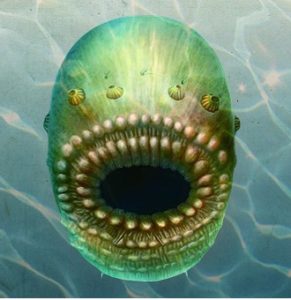
A new study carried out by researchers from Northwest University in China and the University of Cambridge in the UK suggests that a microscopic, bag-like sea creature, named Saccorhytus, was probably the earliest known prehistoric ancestor of humans.
This creature lived about 540 million years ago and was found in China. According to researchers, Saccorhytus—named after its sack-like feature—was the common ancestor of a wide variety of species. It had an elliptical body and a big mouth. The microfossils of Saccorhytus were discovered by researchers in the Shaanxi Province in China, and its features were found to be amazingly preserved in the fossils. The team isolated fossils from the surrounding rock, and then examined them under a CT scan and an electron microscope. Researchers were then able to create a picture of how Saccorhytus might have looked.
According to researchers, microfossils of Saccorhytus were found to be older than other known deuterostomes—a broad biological category that includes a number of subgroups, including the vertebrates, and believed to have existed about 510 to 520 million years ago. This was the time when deuterostomes started to diversify into vertebrates, sea squirts, echinoderms and hemichordates.
Simon Conway Morris, Professor at University of Cambridge, said: “We think that as an early deuterostome this may represent the primitive beginnings of a very diverse range of species, including ourselves.”
“Saccorhytus now gives us remarkable insights into the very first stages of the evolution of a group that led to the fish, and ultimately, to us,” Degan Shu, from Northwest University, added.
The detailed findings of the study have been published in journal Nature.